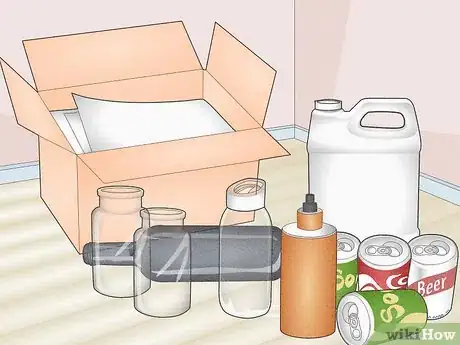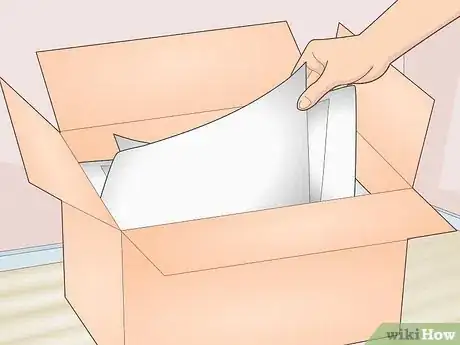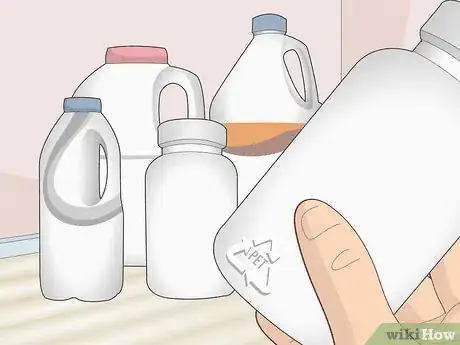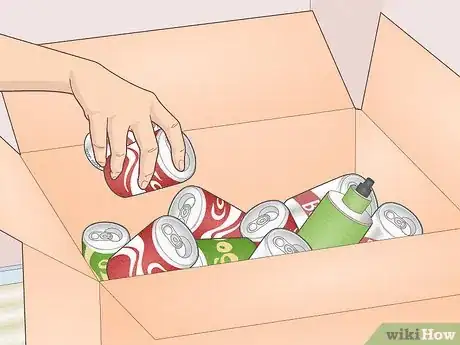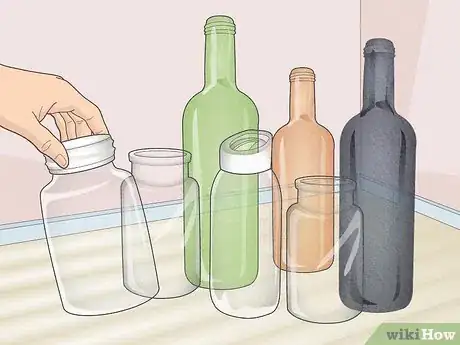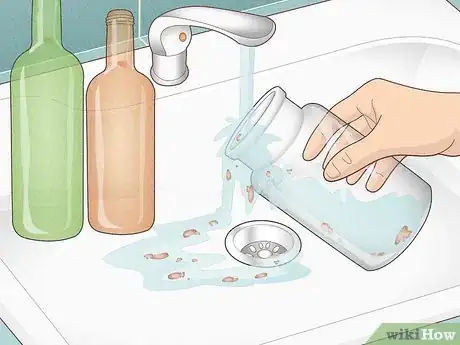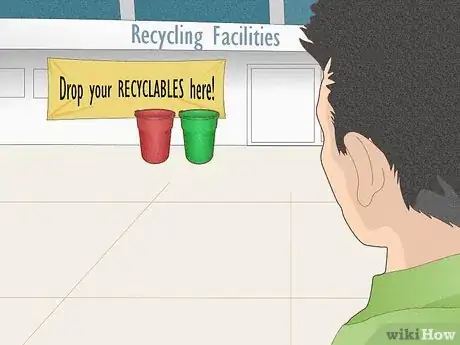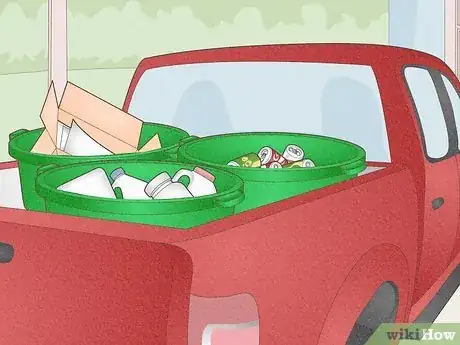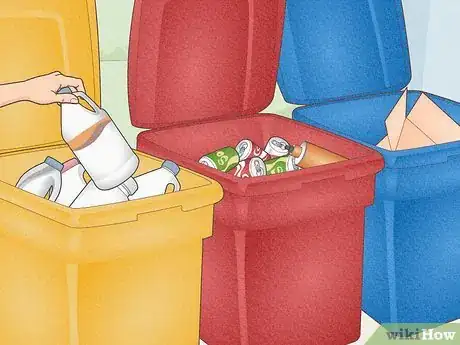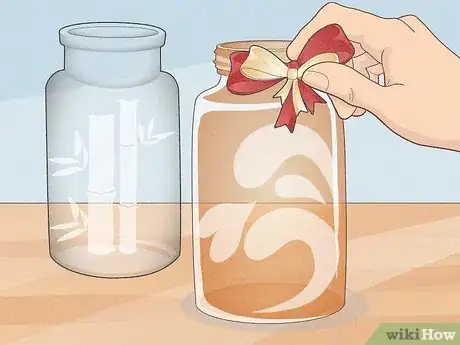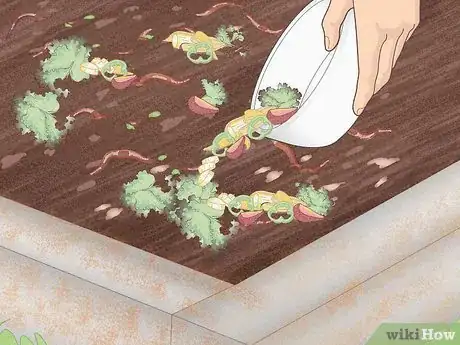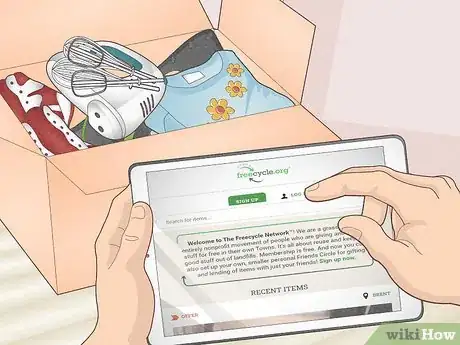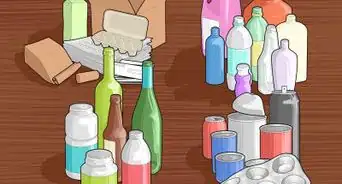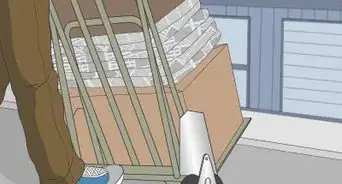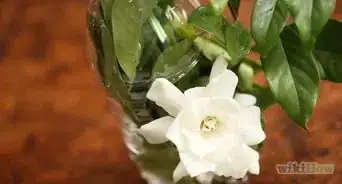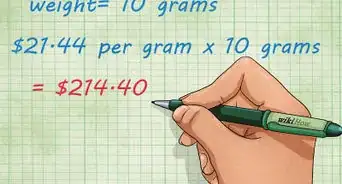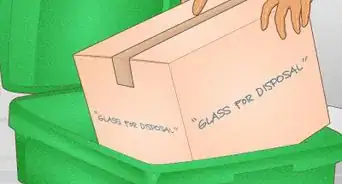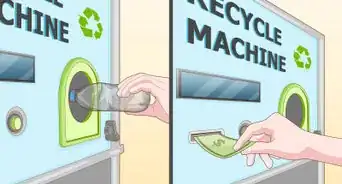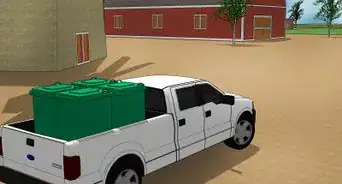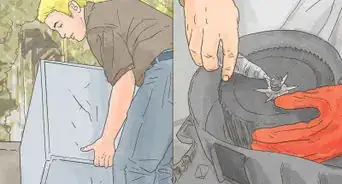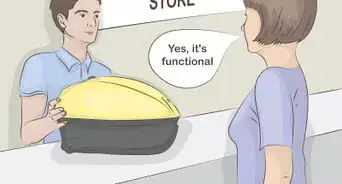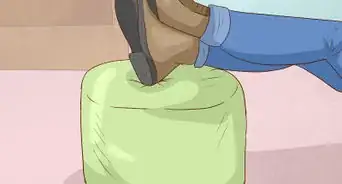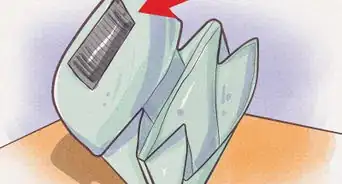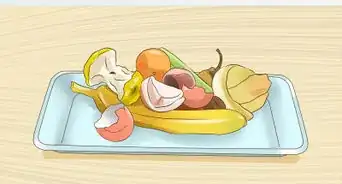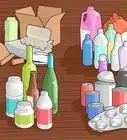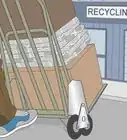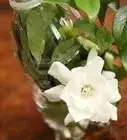This article was co-authored by April Jordan. April Jordan is a Sustainability Specialist and the Founder of The Ethical Edit, a blog dedicated to making ethical fashion and lifestyle changes accessible by sharing easy-to-digest sustainability information and ethical and sustainable brand reviews. With over five years of experience in sustainability and over five years in the marketing and communications field, April is passionate about using her skills to make the world a better place.
There are 8 references cited in this article, which can be found at the bottom of the page.
This article has been viewed 32,718 times.
Recycling can make a big impact on the amount of garbage that ends up in a landfill, but it can sometimes be a little hard to know what should and shouldn't go into your recycling bin. Luckily, we can help you learn what to recycle so you can reduce the amount of waste that you create!
Steps
Recycling Basics
-
1Know what can and cannot be recycled. In general, you can recycle paper, plastic, metal, and glass. Do not assume, however. There are exceptions and particular rules that apply to each material category. Read the recycling policies for your local recycling center to learn which items they'll take.
-
2Recycle paper. Assume that all paper products are recyclable unless they contain some attached metal or plastic component. Fill your paper bin with newspaper, magazines, cardboard, envelopes, egg cartons – anything made completely from paper.[1] Paper products are shredded, mulched, and reformed into recycled paper. Create separate bins for your newspapers; your magazines, envelopes, printer paper, and glossy paper; and your cardboard.[2]
- Look out for hidden plastic and metal components. A paper milk or broth carton, for instance, might be sealed with an interior metal (non-recyclable) lining to preserve the contents. You'll need to remove any non-paper components before giving paper products to a recycling program.
- Consider making recycled paper at home. The process is relatively simple, and you can use it to dramatically reduce the amount of paper waste that flows out of your home!
Advertisement -
3Know what types of plastic are recyclable. As a general rule of thumb: if it holds its shape, it can be recycled; if it doesn't hold its shape, it goes to the landfill. Thus, a plastic peanut butter tub or a plastic restaurant takeout box would be recyclable. You would not, however, be able to recycle an amorphous plastic bag or a six-pack soda can connector. Learn about the seven categories of plastic waste![3]
- 1: PET (Polystyrene Terepthalate): This is one of the most common plastics used in consumer products. You can find it in most water bottles and soda bottles, as well as some packaging. PET is almost always recyclable.
- 2: HDPE (High-Density Polyethylene): This is the stiff plastic found in milk jugs, toys, soap bottles, and some plastic bags – even park benches and waste bins. It is the most commonly recycled plastic because the process is comparatively easy and safe.
- 3: PVC (Polyvinyl Chloride): PVC is not recyclable. This category of plastic is soft and flexible: it is used to make everything from clear plastic food wrapping to garden hoses to plastic pipes to children's toys. PVC contains a number of toxins that can leach out throughout its life cycle.
- 4: LDPE (Low-Density Polyethylene): This category is commonly used to make shrink-wrap, squeezable bottles, grocery bags, and garment bags. It is safer and less toxic than many other plastics. LDPE is not often recycled, but more and more communities are taking steps to handle this material.
- 5: PP (Polypropylene): This is recyclable through some curbside programs, but it is rarely recycled in the U.S. PP is often used as a barrier against moisture in chemicals: in products like plastic liners, disposable diapers, yogurt containers, straws, and packing tape. Ask your recycling program if they recycle PP!
- 6: PS (Polystyrene): This cheap, lightweight plastic goes into egg cartons, styrofoam cups, plastic cutlery, "packing peanuts," and laminate flooring. Polystyrene is carcinogenic, and it is one of the plastic types that most permeates the world's oceans and landfills. PS can be safely recycled, but most programs are not equipped to do so.
- 7: Other (BPA, Polycarbonate, and LEXAN): Category #7 is a catch-all for various polycarbonate and "other" plastics, which are usually not recyclable. Products containing #7 plastic include disposable coffee pods, baby bottles, and car parts. One notable exception is PLA plastic, made from bio-based polymers, which is compostable but still falls into category 7.
-
4Learn how to recycle metal. The average recycling center is only equipped to recycle steel and aluminum. Thus, recycle your steel and aluminum cans: beverage containers, food storage, and aerosols. Be sure to wash and sort your aluminum food packaging, as well – pie plates, dinner trays, and foil.
-
5Recycle glass. Be sure to recycle your used glass jars and bottles! Glass is recycled by color: brown, green, and clear. Sort your glass before you bring it to a recycling program. It doesn't matter if the glass breaks into shards – it is usually melted down and reshaped into new bottles. If you are able to keep the bottles whole, however, many U.S. states offer a small refund for each whole, empty bottle that you return to a local grocery store.[4]
- Do not store your bottles in the same bin as used lightbulbs, mirrors, sheet glass, and pyrex. These products are made from a different type of glass than bottles, and they are usually not recyclable.
-
6Clean recyclables before sorting. Many recycling centers will not accept items that constitute more than 10% food waste. Rinse out your plastic containers, your glass bottles, and your aluminum food packaging before you try to recycle them. It won't take long, and you will make the job much easier for everyone else involved.
Using Recycling Programs
-
1Learn about recycling programs in your area. Some regions offer curbside pickup for recycling, while other communities feature municipal or commercial drop-off sites. Ask your neighbors, visit the website for your city or county, or run a web search for "recycling in [your region]." Find out what you can and cannot recycle through these programs.
- Find out if there's anything that your local recycling center will not recycle. Some centers, for instance, are not equipped to handle certain types of plastic. Every recycling program is different.
- Find out whether you need to sort your recycling. Some centers require you to separate out different materials before dropping them off, while other centers will sort through mixed waste to pick out the recyclable items. As a general rule, drop-off sites require you to sort your recycling, while curbside pickup programs will take a mix.[5]
-
2Use a curbside pickup program. If your community features some sort of municipal recycling pickup, make sure that you have a city- or county-issued recycling bin. Place your recyclable waste into the "recyclables" bin, and place your non-recyclable waste into the "garbage" or "landfill" bin. Find out when your community's trash pickup day is. When you place your trash out on the curb, put the recycling bin out as well.
- Some regions even offer a curbside compost pickup! Learn about the difference between composting and recycling.
- If your recycling is not picked up on trash day, try to get in contact with someone from the city's recycling program. Call the city manager, or run a web search to find a contact number for the recycling center. Find out why your bins were not picked up, and ask about what you'll need to do to get them to the recycling center.
-
3Sort your recycling at home. If you plan to take your recyclable items into a commercial or municipal drop-off point, then you will probably need to separate the different materials from one another. Establish separate bins for metal, plastic, paper, and glass. This way, when you drop off the recycling bins, you won't have to do any additional sorting – and neither will the workers at the recycling center.
- You can place the items into bags – but remember that plastic bags are not recyclable! You'll need to take the waste out of the bags before you drop if off.
- Make sure that everyone in your household knows which items can and cannot be recycled. Try making an informational sign or handout to post near the recycling bin.
Reusing and Repurposing
-
1Repurpose before you throw out. Consider how something might still be useful even after it has fulfilled its original purpose. Many consumer products are designed to be thrown away after a single use – but with a bit of care, you can learn to break the cycle.
- Look for ways to recycle items into home decor: turn old boots into planter pots, sew clothing into blankets, and use old wine bottles as candle holders.
- Think about how you can repurpose a "used" item into something functional. Wash out old condiment jars and use them for drinking or storage; use old clothes as cleaning rags; and consider rinsing out slightly-used Ziploc bags for a second use.[6]
-
2Compost food waste. You can "recycle" organic matter (paper, leftovers, coffee grounds) at home by mulching it together into a compost pit or compost bin. As the food waste decays, it will gradually turn into soil with the help of worms or other insects. You can spread the composted soil onto your garden, or you can donate it to a local farmer!
-
3Donate. Think carefully before you throw something away. Even if you don't know how you yourself will reuse an item, there is a chance that someone else will be able to use it. Consider taking loads of old clothes, media, and household ephemera down to a local Goodwill or community thrift store.
- Try using community websites like Craigslist and Freecycle to find homes for unused items that you want to sell or give away. Before you throw something away, ask your friends, your family, and your neighbors if they can use it.[7]
- Most Goodwill centers feature a drop-off point where you can bring your still-usable things, no questions asked. Look around: there may be other thrift stores or distribution centers in your area that offer a similar service.[8]
References
- ↑ http://www.earth911.com/recycling-guide/how-to-recycle-paper/
- ↑ http://eartheasy.com/live_recycling.htm
- ↑ http://learn.eartheasy.com/2012/05/plastics-by-the-numbers/
- ↑ http://eartheasy.com/live_recycling.htm#c
- ↑ http://www.sandiego.gov/environmental-services/recycling/
- ↑ http://www.recycling-guide.org.uk/recycle.html
- ↑ https://www.freecycle.org/
- ↑ http://www.goodwill.org/donate-and-shop/donate-stuff/
